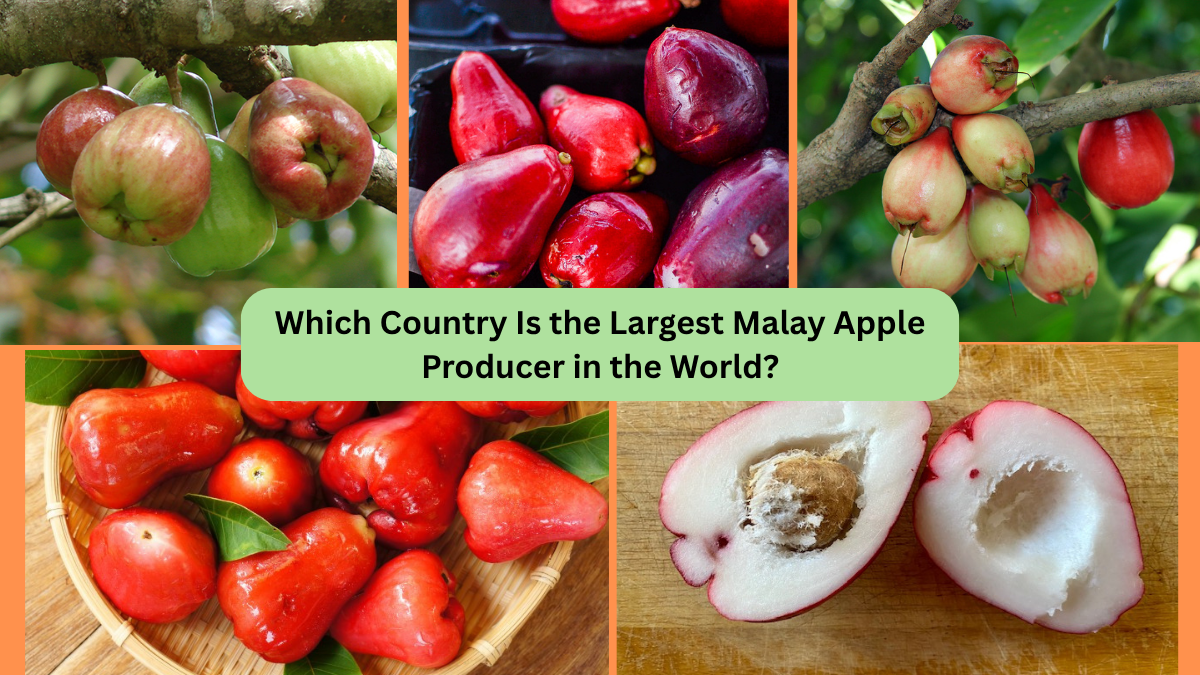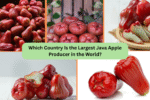Malay apple, known scientifically as Syzygium malaccense, is one of the most striking and hydrating tropical fruits native to Southeast Asia and the Pacific Islands. With its glossy, crimson to deep maroon skin and crisp, mildly sweet flesh, the Malay apple is a beloved delicacy in warm, humid climates. Often referred to as mountain apple, rose apple, or Otaheite apple in various regions, this fruit offers a refreshing escape from tropical heat and a rich legacy in traditional medicine and regional cuisines.
But which country takes the lead in growing this vibrant tropical treasure? In this article, we explore the origins, cultural value, health benefits, and reveal the largest Malay apple producer in the world.
What Is Malay Apple?
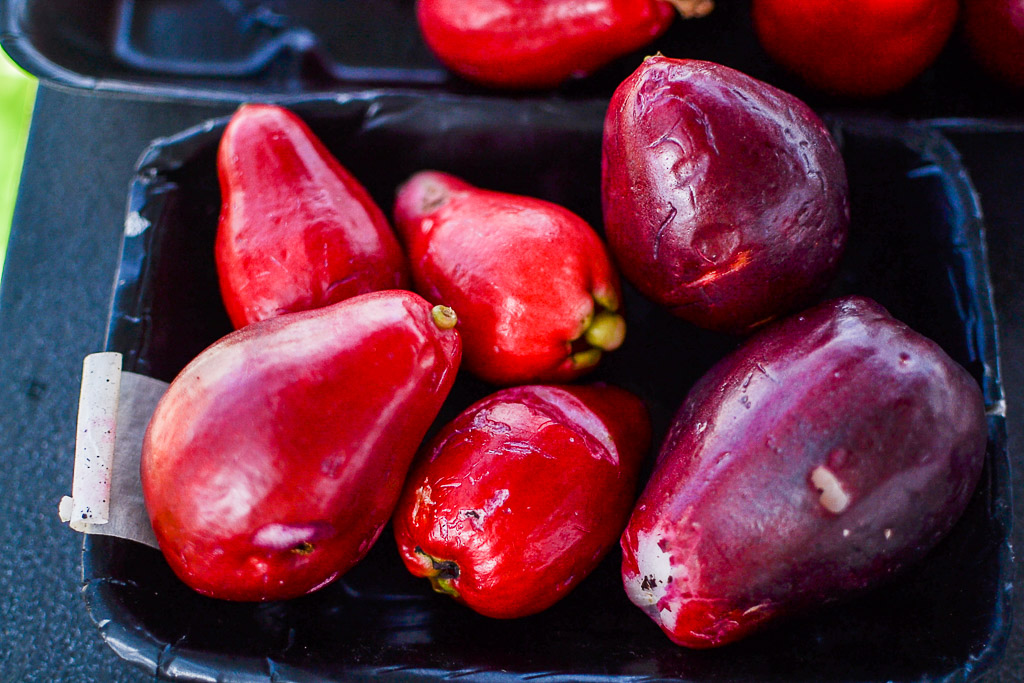
Malay apple is a fast-growing, evergreen tropical tree from the Myrtaceae family, producing bell-shaped, glossy-skinned fruits. Unlike conventional apples, it thrives in consistently warm, wet climates. The fruit’s flesh is light, spongy, mildly sweet, and extremely hydrating due to its high water content.
Malay apple trees can reach heights of 15 to 20 meters, bearing showy pink or red flowers, followed by clusters of fruit. Though similar in appearance to Java apple (Syzygium samarangense) and rose apple (Syzygium jambos), Malay apple is larger and darker in color.
Historical and Cultural Significance
Malay apple has been cultivated across Southeast Asia for centuries, with its origins traced to the Malay Peninsula, the Andaman and Nicobar Islands, and the Pacific Islands. Indigenous communities valued the fruit for both its nutritional and medicinal properties. Early explorers and traders introduced the fruit to other tropical regions, including the Caribbean, Hawaii, and Central America, where it quickly gained popularity.
In many Pacific and Asian cultures, Malay apple is associated with abundance, hospitality, and purity. It is often presented during festivals, weddings, and religious ceremonies. In Hawaiian tradition, for instance, Malay apple, called “Mountain Apple”, is cherished in songs, stories, and folklore.
The Largest Malay Apple Producer in the World: Indonesia
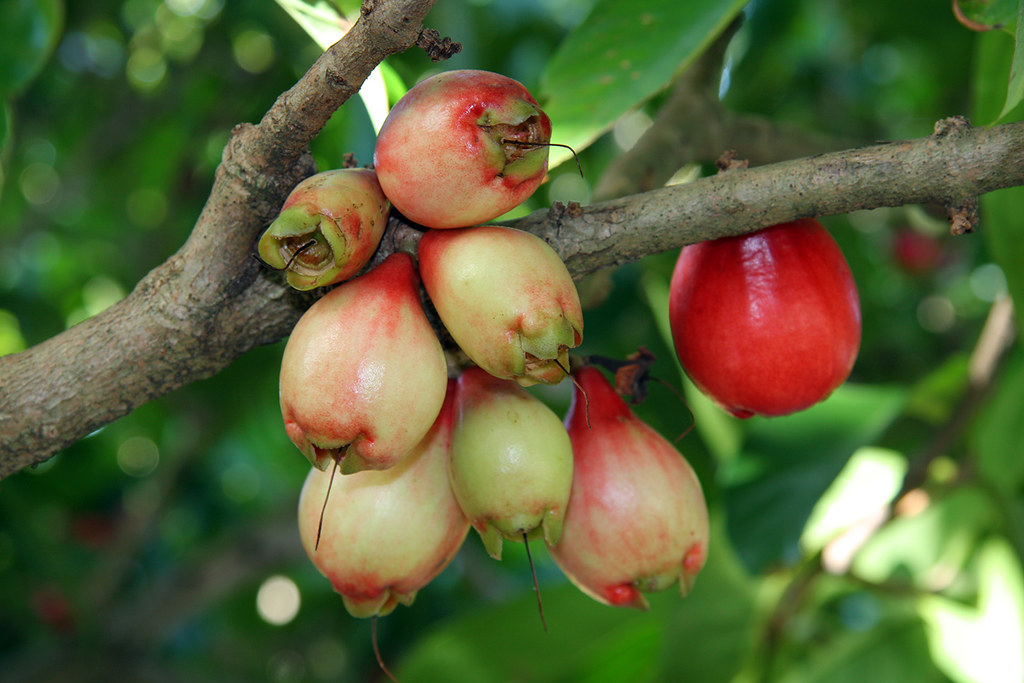
Indonesia stands as the largest producer of Malay apple in the world. The country’s rich biodiversity, expansive tropical lands, and favorable climate provide perfect conditions for Malay apple cultivation.
Why Indonesia Leads in Malay Apple Production
1. Native Range: Malay apple is indigenous to the Malay Archipelago, particularly in what is now modern-day Indonesia. The fruit has long thrived in the rainforests of Java, Sumatra, Borneo, and Sulawesi.
2. Ideal Growing Conditions: Indonesia’s humid, tropical climate with consistent rainfall and fertile volcanic soils is ideal for Malay apple trees. The tree’s hardiness allows it to flourish in various elevations, from coastal areas to upland rainforests.
3. Traditional Agricultural Practices: Generations of Indonesian farmers and forest dwellers have cultivated and harvested Malay apples for subsistence, local markets, and traditional uses.
4. Culinary and Medicinal Integration: In Indonesian cuisine, Malay apple is enjoyed fresh, pickled, or added to fruit salads like rujak. Its bark, leaves, and fruit are used in folk medicine to treat ailments ranging from digestive issues to skin problems.
5. Regional and Export Demand: The domestic demand within Indonesia, combined with exports to neighboring Southeast Asian countries and specialty markets in the Middle East and Europe, ensures large-scale production.
Other Significant Malay Apple Producers
While Indonesia dominates production, several countries cultivate Malay apple extensively:
Malaysia: Malaysia shares similar climatic advantages and grows Malay apple throughout Penang, Selangor, and Sabah. Known locally as Jambu Bol, it’s a popular seasonal fruit in local markets.
Thailand: In Thailand, the fruit, called Chomphu-pookao, is less widespread but valued for home gardens and local consumption.
The Philippines: The Philippines grows Malay apple in the Visayas and Mindanao regions, integrating it into local diets and folk remedies.
Hawaii (USA): Introduced by Polynesian settlers, Malay apple became a staple in Hawaii, where it’s still widely consumed and cherished in traditional Hawaiian culture.
Caribbean Islands: In Jamaica, Trinidad, and other Caribbean nations, Malay apple, known as Otaheite apple, is beloved for its thirst-quenching quality and festive symbolism.
Health Benefits of Malay Apple
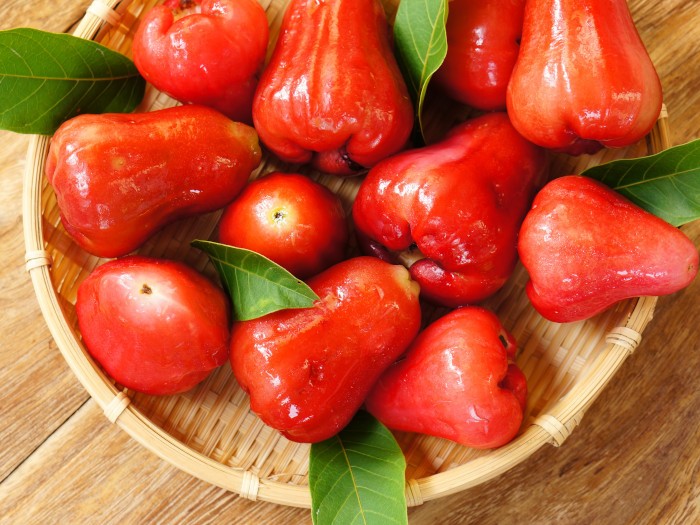
Malay apple is more than a refreshing snack — it’s a functional food packed with nutritional benefits:
- Hydration: With over 85% water content, it naturally rehydrates the body.
- Rich in Vitamin C: Boosts immunity and supports skin health.
- Antioxidant Properties: Contains phenolic compounds and flavonoids that combat free radicals.
- Digestive Health: High dietary fiber aids digestion and prevents constipation.
- Anti-Inflammatory: Traditional medicine uses Malay apple bark and leaves to treat inflammation.
- Weight Management: Low-calorie, high-water content makes it a perfect addition to weight-loss diets.
Culinary Uses of Malay Apple
Malay apple is highly versatile in tropical culinary traditions:
- Fresh Consumption: Eaten raw with salt or chili powder.
- Fruit Salads (Rujak): Combined with tamarind, chili, and palm sugar dressings.
- Pickles and Preserves: Pickled with vinegar or made into jams.
- Juices and Smoothies: Blended into hydrating beverages.
- Traditional Remedies: Bark and leaves used in teas and herbal medicines.
Challenges in Malay Apple Production
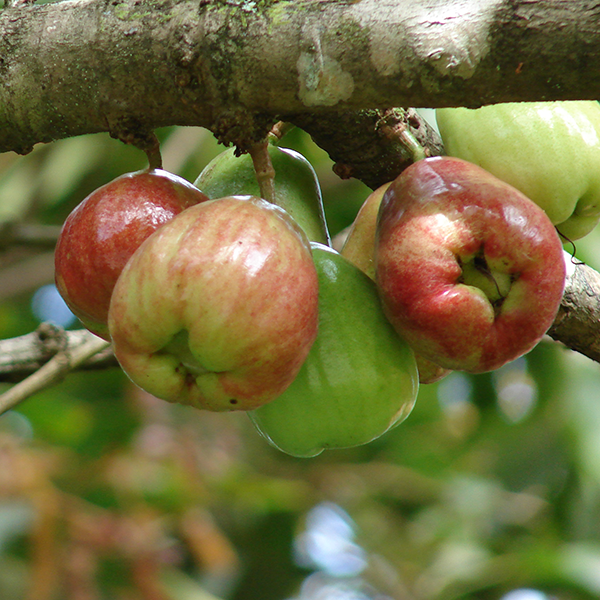
Though popular, Malay apple farming faces several limitations:
- Short Harvest Season: Typically available for only a few months each year.
- Perishability: The fruit spoils quickly post-harvest, limiting export potential.
- Pests and Diseases: Susceptible to fruit flies and fungal infections.
- Limited Commercial Awareness: Often overshadowed by better-known tropical fruits like mangoes and papayas.
Global Market Potential
Interest in exotic and functional fruits is growing worldwide. Malay apple holds potential in health-food markets, specialty grocery chains, and wellness products. There’s an emerging market for:
- Organic Fresh Produce in Europe and the Middle East.
- Health Drinks and Juices promoting hydration and antioxidant benefits.
- Natural Skincare Products utilizing its antioxidant-rich extracts.
Improved logistics, cold storage technologies, and targeted marketing can help countries like Indonesia and Malaysia expand Malay apple’s global footprint.
Conclusion

Indonesia’s fertile lands, tropical climate, and long-standing agricultural heritage have earned it the title of the world’s largest Malay apple producer. From the dense rainforests of Sumatra and Java to bustling markets in Jakarta and Bali, Malay apple remains a cherished fruit, deeply woven into Indonesia’s culinary, medicinal, and cultural tapestry.
While countries like Malaysia, Thailand, and the Philippines also cultivate this luscious fruit, Indonesia’s dominance in terms of scale, quality, and variety diversity is unmatched. As global interest in exotic, healthful, and sustainably sourced fruits rises, Malay apple is poised for greater recognition beyond tropical shores, carrying forward its legacy as a treasured symbol of tropical abundance and wellness.
